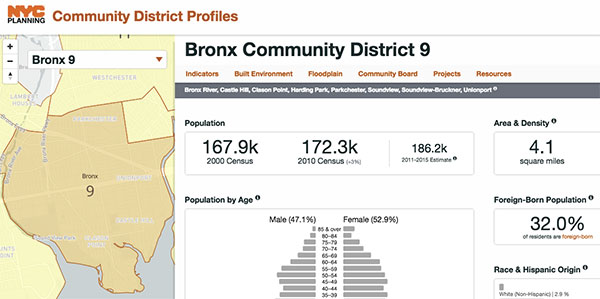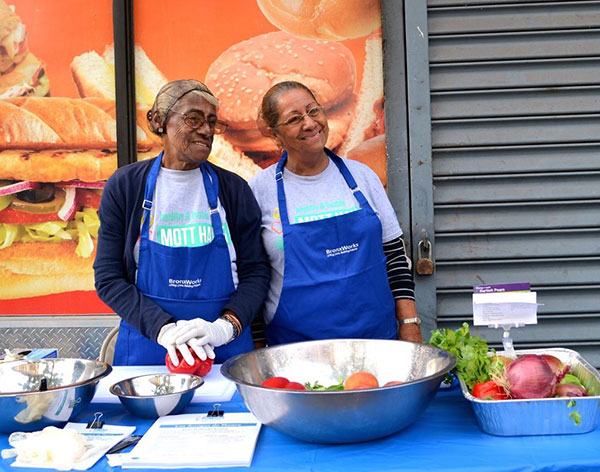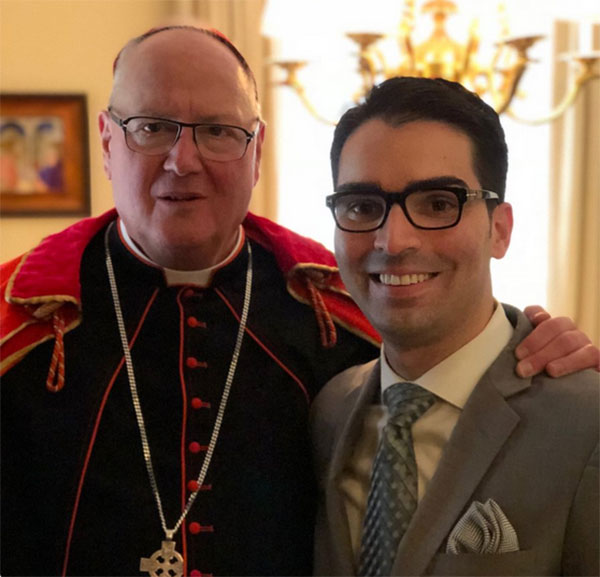For Government, It's DSO or Die

City Planning's Planning Labs
Private sector innovations in information technologies are transforming virtually every industry, and the rate of change seems to be accelerating. A decade ago, Facebook was a website used almost exclusively by college students to keep in touch with each other; today it’s one of the world’s largest media distributors with the capability of swaying elections simply by tweaking its algorithms; and in ten years it’ll likely be directing a self-driving car to drop you off at your friend’s house.
The mindblowing rate of innovation taking place in the private sector is a stark contrast to the glacial pace of innovation in government bureaucracies. Indeed, to many people in the private and public sectors, government agencies appear, at best, frozen in time, and at worst, actually deteriorating before our very eyes. New York City’s beloved subway system is a case in point.
It doesn’t have to be this way. Government agencies can leverage new tools, techniques and technologies to improve their effectiveness and even delight their users, but doing so requires more than simply signing a fat contract with a vendor of high-tech wares. It requires government adopting the values of the “open source way”: open exchange, participation, rapid prototyping, meritocracy, and community building.
Doing so will change government agencies in significant ways: new roles, new skills, new trainings, new people, and new organizational structures.
It’s easy to see why wholesale reform of government agencies isn’t happening: people don’t want to lose their jobs. But piecemeal reform is taking place within government, and patterns are emerging that show how small teams within government that deliver “digital services” to other government units and agencies - things like websites, mapping systems, workflow management solutions and other high-tech products and services - are driving change.
The major factor that distinguishes these newly emergent “digital services organizations” (DSOs) from other technology groups within government is that their main job isn’t procuring software from large software companies, but instead to leverage open source software, peer to peer collaboration methodologies, and agile development approaches to build their own products.
The origins of the “digital service” concept can be traced back to 2010 when the government of the United Kingdom began a website redesign project that turned into something much more: a rethinking of the very nature of government. Mike Bracken, co-founder of the U.K.’s Government Digital Services (GDS), articulated “government as a platform” in his 2014 PDF talk. GDS has gone on to become a vocal advocate of the open source way in government and is responsible for saving the UK Government over £1 billion a year since its inception in 2013.
The United States federal government got serious about starting a GDS-style entity in 2013 when the Obama administration realized that its hallmark legislative achievement, the Affordable Care Act, could be jeopardized by its inability to successfully launch the HealthCare.gov website by the time the legislation came into effect.
Once it became clear that the project was massively mismanaged, the administration assembled a crack team of technologists from inside and outside government to get the website up and stable. To achieve this goal, the team used many open source and agile development methodologies popular in startup culture. Ultimately they got the site launched, and many of the people involved went on to create and lead high-tech units in the government such as the U.S. Digital Service in the White House, and “18F” within the General Services Administration.
18F “collaborates with other agencies to fix technical problems, build products, and improve how government serves the public through technology.” Its process relies on open source and startup-centric principles of “human centered design, agile methods and open technology.”
This approach is very different than the “monolithic procurement” approach that usually happens within government where “large, complex, multi-year contracts” are drawn up between government agencies and large corporations. “According to the Standish Report from 2003-2012, 94 percent of government software projects over $10 million are either over budget, over time, or just don’t work,” via the 18F website.
Instead of monolithic procurement, 18F and other DSO advocate for in-house open source development and modular procurement, which is “a strategy that breaks up large, complex procurements into multiple, tightly-scoped projects to implement technology systems in successive, interoperable increments.” By pairing this with open source software development and meticulous documentation, 18F can share the innovations they develop for one agency with others, reducing costs for everyone involved and allowing anyone in the world to use and contribute code to their projects.
This approach has been highly successful. In less than four years, 18F has grown to nearly 200 staff and completed hundreds of projects for over 25 federal agencies that range from building public websites (like FEC.gov) to backend infrastructure (like Cloud.gov) and a myriad of products that help other government workers build faster, more accessible, and more secure technology products. They’ve been successful to the point where for-profit software industry groups lodged an official complaint that 18F was hurting their businesses because they were saving the federal government too much money.
The significance of 18F’s accomplishments, along with the clarity of their message about how to reform government, has gone almost entirely unnoticed by nearly everyone, except for a small but very online group of people who self-identify as “civic technologists.” This community consists mostly of people who work as technologists for private enterprise by day, and try to use their technical skills to more broadly help people by night. Rarely do these people actually work within government, and if they do, it’s rarer still for them to have the freedom and support within government to perform the type of work that 18F does.
While there are a number of federal entities that have adopted the DSO model such as Defense Digital Service, which applies 18F-style approaches across the Department of Defense, at the municipal level there are very few: San Francisco has a small digital services team, and the teams managing websites in Boston and Philadelphia have some DSO characteristics, but New York City Department of City Planning’s Planning Labs follows the 18F model most closely.
Planning Labs is a nine-month-old, three-person unit within DCP that isn’t shy about borrowing from 18F’s playbook. Its site is built with 18F code, its published principles are nearly identical, and its members’ outspoken support for open source as the path forward for government is just as loud.
In its short existence, its already launched a half-dozen products, each of which uses open source approaches to deliver a standardized product. Looking through its portfolio of products - from its zoning tool, facilities directory, tax lot viewer, and statistical mapping tool - it becomes clear that Labs isn’t simply building products, but instead organizing the city’s information in an open, standardized, and future-friendly way that will benefit New Yorkers for generations. It’s not hard to imagine these various systems being weaved together along with other open source solutions such as David Moore’s City Council tracking system Councilmatic to create a comprehensive city information system like SimCity, but real, and in real-time.
For Chris Whong, Planning Lab’s founder, NYC Planning Labs “is responding to the need to create more functional and accessible tools for planners, practitioners, and the general public to use and analyze data. With a smaller team, human-centered design, agile processes, and open source software, we are delivering tech products better, faster, and cheaper in-house.”
Whether one thinks government is good or bad, or somewhere in between, almost everyone agrees that it should work effectively, operate transparently, and if it’s going to provide services to the public, they should be of decent quality and at a reasonable costs. The capacity for government to deliver services, and the public’s desire to pay taxes to fund government agencies to provide them, is heavily dependent on the effectiveness of government agencies and the civil servants that work within them.
In an age of rapid private sector innovation, those agencies and civil servants will need to be able to leverage technology effectively if they want to keep up with their private sector counterparts. If they don’t, the public will want to privatize these services. It’s that simple.
The “do or die” nature of this moment can’t be overstressed enough. If DSOs like 18F and Planning Labs aren’t given the resources and flexibility they need, their members will become dejected and find happier homes in a private sector that values their talents.
Anyone who is passionate about good government, anyone who thinks the public sector is important and worth preserving, should be studying and supporting DSOs and the principles that they follow. If they aren’t the future of government, it’s possible nothing is. Such is the sentiment of Matt Brackin, the co-founder of the U.K.’s GSA, who recently tweeted: “I hoped the internet era would revitalise our state. It's just exposed its bankruptcy.”
***
Devin Balkind is a technologist and nonprofit executive who works on civic technology projects in New York City through Sarapis Foundation and on humanitarian projects around the world through Sahana Software Foundation. He was a candidate for New York City Public Advocate in 2017. On Twitter @DevinBalkind.
***
Have an op-ed idea or submission for Gotham Gazette? Email This email address is being protected from spambots. You need JavaScript enabled to view it.
Don’t Pass a State Budget Without Investment in Human Services

(photo via @UNHNY)
Poverty-related issues such as homelessness or family crisis treatment like opioid addiction need more than a simple infusion of cash. Addressing the underlying issues and building community resilience requires long-term, community-based organizations dedicated to ensuring that families and individuals have access to local programs that address the stability of their communities.
State government appreciates this expertise as it contracts with human service organizations to deliver programs on its behalf, but government leaders fail to provide the funding necessary to fully support the organizations’ long-term stability. Unfortunately, state contracts rarely cover the full cost of human services, which has resulted in a chronically underfunded sector with crumbling infrastructure and an undercompensated workforce. The absence of adequate funding directly undermines the long-term stability of this sector, which undermines the short- and long-term stability of its workforce and clients.
Employees in the nonprofit human services sector are poorly compensated, despite their experience and education — 41% percent have a four-year college degree and another 25% have some college education. As a result, these dedicated workers often find themselves relying on government benefits to support their own families. Low wages drain talent from our sector as the workers with experience move on to find jobs that provide better compensation. Employee turnover undermines human services programs, which are best served by a stable workforce, whose members earn the trust of their clients and can most effectively help them.
The human services sector vigorously supported Governor Cuomo’s efforts to increase the minimum wage, but we were disappointed when our sector’s contracts were never adjusted by the state to fund the wage increases for human services employees. Unlike for-profit businesses, nonprofit human service organizations cannot increase the cost of their services to pay for higher wages. These increased wages must be paid for by the state.
The governor and state Legislature are currently negotiating the new budget for the state fiscal year that beings on April 1. We have joined a statewide coalition of 350 nonprofit human services providers, Strong Nonprofits for a Better New York, in order to call on the state to make key investments to strengthen the human services sector.
One of our key requests is that the state fund the minimum wage for human service contracts, so that we can provide much-needed salary increases for this workforce.
Outdated infrastructure is also a major concern among nonprofit organizations.
Building repairs and technology upgrades are not included in contracts, yet are essential to running quality programs. The state created the Nonprofit Infrastructure Capital Investment Program (NICIP) to address this issue, but, unfortunately, current funding levels are not sufficient to support current needs. Hundreds of nonprofits have applied for a very limited number of grants and we call on state leaders to add funding to NICIP to support these outstanding grant applications.
Without these critical investments in our workforce and capital for our facilities, nonprofit human services organizations will be forced to serve fewer families, children, immigrants, and older adults in the coming year. The New York State Assembly has included these items in its budget priorities and now we need the governor and the State Senate to support funding the minimum wage and continuing to fund infrastructure.
Without this investment it will be our communities that ultimately suffer.
***
Susan Stamler is the Executive Director of United Neighborhood Houses, an association of settlement houses that reaches more than 750,000 New Yorkers each year. On Twitter @UNHNY.
***
Have an op-ed idea or submission for Gotham Gazette? Email This email address is being protected from spambots. You need JavaScript enabled to view it.
Attacks on Yeshivas Present a Dangerous Slippery Slope

Eric Ulrich, the author, right, and Cardinal Dolan (photo: @eric_ulrich)
In the coming months, the city and state education departments are expected to rule on an issue that may have huge repercussions for parental school choice and religious freedom. A small group of former yeshiva graduates have alleged that religious schools in Orthodox Jewish communities are failing to provide adequate education to students. As an avid supporter of parental choice, I worry education leaders will side with these critics, posing a threat to private schools well beyond the Jewish community.
Many years ago, I attended P.S. 63, an elementary school in Queens. My mother, a single parent and devout Catholic, made the decision to transfer me to the former Nativity of the Blessed Virgin Mary School, a Catholic elementary school. She wholeheartedly believed Catholic school was a better environment for me at the time – and it was. Appreciative of the opportunities Catholic school afforded me, I continued my religious education at Cathedral Prep Seminary High School.
As the product of both public school and Catholic school education, I recognize the importance of parental school choice. The values instilled in me through my religious upbringing and education paved the way for my career as a public servant. Attending Catholic school ignited my passion for helping people; and at one point in my life, I seriously contemplated becoming a priest. If my mother did not have the freedom to enroll me in the school of her choice, I might not have taken the path I’ve taken, which I have found extraordinary fulfilling.
During my time in office, I have visited many yeshiva schools. In each of those visits, I saw a vibrant atmosphere. It is clear to me the Orthodox community takes education seriously. The school day begins just after sunrise, and the majority of yeshiva students study long after they are dismissed. Their studies are deeply rooted in the Torah and Talmud, which encourage discussion and debate at a very young age. Their studies focus heavily upon religious and legal texts, and teachers employ a method of Socratic dialogue with students more commonly found at law schools. That may not be a familiar experience for graduates of traditional secular schools, but tens of thousands of parents choose these schools each year because yeshivas have served them – and their families – well for generations.
The narrow issue before officials is whether these yeshivas are adhering to a vague state regulation requiring private schools to provide a substantially equivalent education to that of public schools. What that means in practice is enormously subjective; private and religious schools throughout the state are awaiting the results of a looming “clarification” from the State Education Department with deep trepidation.
Government officials are being subjected to a pressure campaign by anti-yeshiva activists, who continuously attack the Orthodox Jewish community under the guise of educational quality. We must continue to protect freedom of religion and the rights of parents to send their children to religious schools – whether they are Catholic, Islamic, or Jewish. If we do not stand-up for yeshivas today, the future of other private schools may be next.
***
Eric Ulrich is a City Council member representing parts of Queens. On Twitter @eric_ulrich.
***
Have an op-ed idea or submission for Gotham Gazette? Email This email address is being protected from spambots. You need JavaScript enabled to view it.




